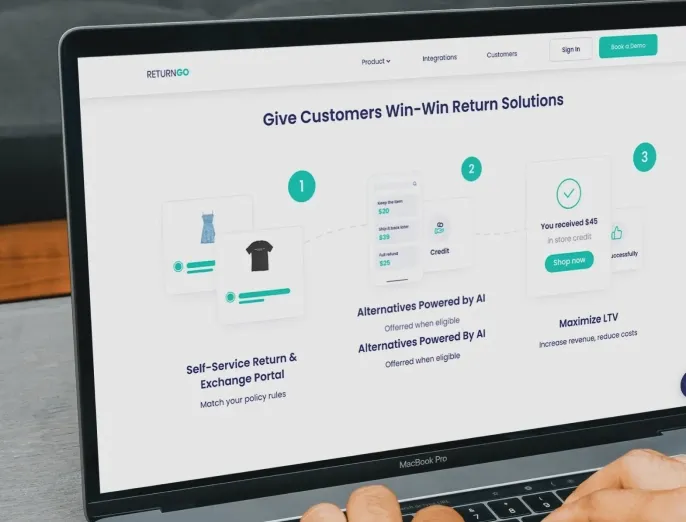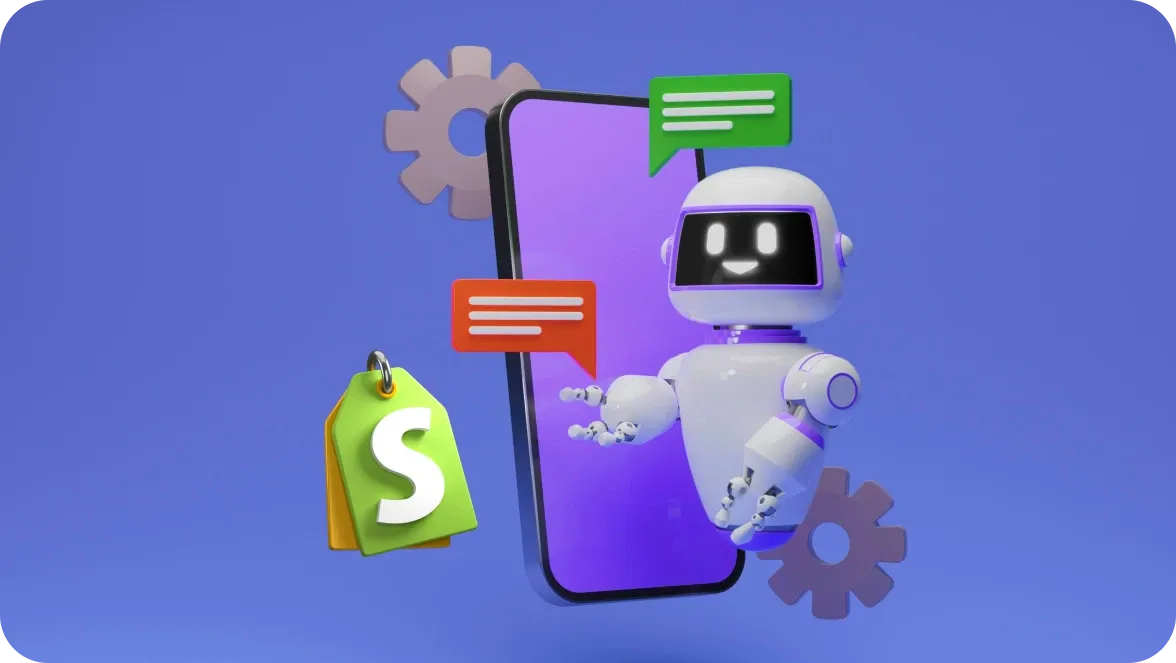
Robust AI-powered product recommendations that seemed unbelievable earlier today are among the top priorities in terms of development for ecommerce, educational, streaming, dating, and social media platforms. Why is it so? It’s kind of a machine that moves your business success forward by keeping users engaged and motivated to explore more of your content. How do recommendation engines work? We explore this question and provide you with a practical guide on how to build a recommendation system for your business.
TL;DR: Familiar with Netflix and Spotify? Then you know recommendation engines.
A recommendation engine provides relevant, highly personalized product or content recommendations.
The recommendation system works based on AI/ML algorithms, analyzing behavioral, product, and contextual data to predict suggestions that best fit user interests.
The main features of the recommender system include personalization, real-time suggestions, scalability, integration with inventory management systems, and more.
The core steps in building a recommendation system are setting the goal, data collection, choosing a recommendation approach, training the model, testing, integration, deployment, and maintenance.
What are recommendation engines?
Recommendation engines are AI/ML-powered software that provides personalized product or content suggestions based on multiple behavioral and contextual parameters. If you have seen film or song recommendations from Netflix or Spotify, you know what AI-driven suggestions look like. They're more profound than recommendations in a regular online store and are way more complicated from a technical point of view. AI-powered recommendation engines take into account a vast amount of factors, from user interests and their historical data to behavior patterns of similar users, analyzing them and showing content that best matches user expectations. On top of that, this kind of engine continues to learn from user actions and adjust recommendations based on their preferences.
How the recommendation systems work

AI-driven recommendation engine leverages machine learning and neural network algorithms to provide relevant, lifelike results. It uses data about previous user interactions to predict which products or content will catch users' attention and keep them on a site longer. The algorithms involved depend on the data available and the types of data filtering, which we’ll discuss later in this article.
What are the steps of the recommendation process powered by AI?
- In the first stage, the engine collects data, including behavioral, demographic, product, and contextual information.
- The next stage is storing structured and unstructured data using a data lake, data warehouse, or hybrid solutions.
- The analysis stage involves applying machine learning algorithms to process and examine datasets, detecting patterns and identifying correlations.
- The filtering stage implies finding the most relevant items from the previous analysis phase.
- At the final stage, the recommendation system analyzes how exactly users interact with provided suggestions to optimize further results.
Key features of a recommendation system
To leverage the full potential of a recommendation engine and apply it to enhance user experience, it is crucial to understand its key features.
Personalized content delivery
AI-powered recommendation engines tailor suggestions to individual preferences, analyzing a vast amount of data. These suggestions change over time, since the system adjusts results based on current data. By leveraging this and other types of AI personalization, you can boost your conversions and revenue by up to 40%, according to McKinsey.
Real-time recommendations
The engine instantly updates suggestions as a customer interacts with your site or platform and keeps them relevant during a session. For example, suppose a customer chooses a bicycle during their current session. In that case, the system will instantly recommend a helmet or a child bike seat if a customer previously purchased items for a kid.
Behavioral and contextual analysis
The recommendation system uses AI to analyze previous purchases and more subtle data, such as search queries and time spent on a website. It takes into account the customer’s wishlist and favorites, analyses the user profiles, and tracks user history. The engines can also understand the context behind customer actions by analyzing their location, device, time of day, and more.
Cross-sell and upsell suggestions
AI-powered recommendations work for cross-selling and upselling, providing suggestions for complementary and alternative items with higher value. Which recommendations to show may depend on the user profile or custom settings specified by a business owner.
Dynamic content personalization
Recommendation widgets are not the only elements that adjust to customer preferences and respond to factors like location, search request, or user profile. The system can also adapt other website content, such as banners, video previews, and more.
Scalability and handling large data volumes
If properly developed, AI-driven recommendation systems process massive amounts of data and handle thousands of simultaneous users without slowing down the website. Even during peak seasons, you can expect the engine to provide relevant suggestions to every customer.
Integration with inventory and ERP systems
The recommender system is integrated with your inventory management system and ERP to align suggestions with your current stock levels and the whole business ecosystem. If you lack some products, a customer gets a recommendation about their alternatives.
Feedback mechanism and continuous learning
The recommendation engine learns from user feedback and improves suggestions over time based on customer interactions like clicks, ignores, and purchases. This helps keep recommendations relevant as customer preferences or market trends change.
How to build a recommendation system step by step
Finally, we’re ready to explore how to build a recommendation system that delivers personalized, relevant suggestions for users.
Step 1. Set the goal
To build a recommendation system that addresses your needs and expectations, you need first to define what you want to achieve. For example, you might wish to boost conversions in your Shopify store or increase time spent on your news website. You should also consider which data is available and which user interactions a system must analyze. This information will help you create your recommendation engine architecture.
Step 2. Collect the data
Once you understand how your recommendation system should work, start gathering relevant data. To collect data, you can use APIs, ready-to-use databases, and web scraping, which involves parsing page content to retrieve the desired data. Divide your data sets into three categories to simplify structuring all your data:
user data (e.g., demographics, ratings, purchase history)
item data (e.g., keywords, categories)
interactions (e.g., clicks, purchases).
Data collection goes hand in hand with data processing, which includes data cleaning, normalization, and categorization. At the cleaning step, you need to remove inaccuracies, add missing values, and transform unstructured data into formats that can be processed further. Data normalization implies organizing all your datasets into an integrated system with standardized formats. This process, along with categorization, lets the system compare the data and make sense of it.
Step 3. Choose a recommendation engine algorithm
Your recommendation system can rely on different algorithms depending on your goals, data type, and available resources. The most popular approaches are collaborative filtering, content-based filtering, and hybrid filtering. Let’s take a look at each in more detail.
Collaborative filtering
This type of filtering works based on the principle that users who made similar choices in the past will likely have similar preferences in the future. For example, collaborative filtering powers friend suggestions and content feeds tailored to user interests on social media platforms like Facebook. Netflix also leverages collaborative filtering to recommend movies based on similar user’s interests. Say, if user A and user B liked the same series in the past, the algorithm suggests another series that user A liked but user B hasn’t yet watched.
From the technical point of view, to ensure this type of filtering, the system organizes user interactions, such as clicks and purchases, into a matrix. Then, to understand how the items in this matrix are alike, similarity measures come into play. It is a mathematical function that quantifies the similarity between objects. You can use two approaches in collaborative filtering. A memory-based approach identifies similarities between users or items using the matrix factorization method.
A model-based approach leverages decision trees and rule-based machine learning methods for building a predictive model. Typically, modern systems leverage both approaches to achieve recommendation accuracy.
Content-based filtering
In contrast to the previous method, content-based filtering focuses on content and item characteristics, such as movie genres and product descriptions, and matches them with preferences a user had before to recommend similar items. Essentially, the system compares a user and item profile to predict which suggestions will work best for a specific user. For example, Netflix uses this approach to recommend series of the same genre a user liked before.
The similarity measures function is also employed for this method, but the system looks for similarities between objects other than those in collaborative filtering.
Hybrid filtering
This method combines collaborative and content-based filtering algorithms to overcome each one's limitations. In this approach, the system can function in multiple ways:
Switch between approaches based on certain criteria
Combine outputs using weighted averages
Provide recommendations from both models
Apply one approach first, then refine with the other
The most prominent company that uses hybrid filtering is Amazon.
Step 4. Train the model
Once you have chosen the filtering type, you can proceed with the model training. This process implies feeding the model with the processed data to let it learn using the applied algorithm. The most popular algorithms for collaborative filtering are K-nearest neighbors (KNN) and Singular Value Decomposition (SVD).
Step 5. Test for accuracy
The next step is validating the system’s performance. This is typically done through the division of data into training and test datasets. The model is trained using the training dataset while tested using the test dataset to evaluate the accuracy of suggestions.
Common validation metrics include the following:
Precision measures the proportion of recommendations relevant to a user. For example, if 80 of 100 suggestions provided by the system are relevant for a user, precision is 80%. The higher the precision, the more effective the recommendation engine.
Recall is the ratio between the number of relevant items provided by the system and the total number of relevant items. In other words, it shows how many relevant items the system actually finds. High recall means that the system works efficiently.
Mean squared error (MSE) calculates the average of the squares of the errors between the predicted and actual ratings. The lower MSE indicates a higher model’s accuracy.
A/B testing implies comparing two versions of recommendation systems to see which one performs better based on user engagement or other factors.
After testing, you may need to fine-tune the model, adjust its parameters, or reorganize data processing. Once you’re satisfied with the results, you may proceed with the integration step.
Step 6. Integrate
You can integrate the engine into your existing ecosystem using one of the following options:
API-based integration is the most common way to connect the recommendation system with your web app. Here, the engine operates as a separate service, while your web application interacts with it via API calls.
Embedding as a microservice implies integrating the recommender engine as an independent service that is still a part of your ecosystem. This approach offers great scalability and flexibility.
Direct integration means that you embed the engine’s logic into your application codebase. It’s an option for smaller projects with no need to handle a high volume of requests.
Step 7. Deploy
Deploy the trained recommendation engine to your product server or cloud platform, such as AWS and Azure. Optimize it for low latency and scalability using techniques like model quantization, caching, or load balancing.
Step 8. Monitor and maintain
Set up monitoring tools like Prometheus and Grafana to track model performance and system health. Also, evaluate the effectiveness based on user feedback and detect issues like bias to regularly fine-tune the model.
Wrapping up
Let’s recall all the steps of building a recommendation engine in a single list.
- Set your goals and revise available data and resources.
- Collect the data using APIs, databases, and web scraping, and use data cleaning and data normalization to prepare the data for model training.
- Choose your recommendation approach: collaborative filtering, content-based filtering, or a hybrid approach.
- Train the model using algorithms relevant to your approach.
- Test the system for accuracy using common validation metrics, such as precision, recall, MSE, and A/B testing.
- Integrate the system using an API-based approach, embedding as a microservice, or direct connection.
- Deploy the recommendation engine and optimize it for low latency and scalability.
- Fine-tune the system based on user feedback and maintain its effectiveness by eliminating issues.
If you have any questions or want to get a consultation on building a recommendation system or exploring AI for ecommerce services for your business, don’t hesitate to contact the DigitalSuits team. We develop software and ensure generative AI integration for ecommerce, real estate, and other industries, ensuring high-quality solutions. You can also hire AI engineers team from us to design and ship real products.
Frequently asked questions
What are the benefits of building a recommendation engine?
Among the top benefits a business gains from implementing a recommendation system are an enhanced user experience, improved customer satisfaction, increased revenue, and a competitive advantage.
What are the challenges of implementing a recommendation system?
When building a recommendation engine, you may face a cold start problem in situations when there is little historical data, such as with new users or items. Another challenge is an irrelevant matrix and inappropriate data that leads to inefficient recommendations.
How to choose the right recommendation engine
You can choose between standard and custom solutions. Standard recommender systems vary depending on the features and fees (per user or per number of recommendations). If you need tailored solutions, you should thoroughly choose your tech partner with relevant expertise.








































Was this helpful?
0
No comments yet